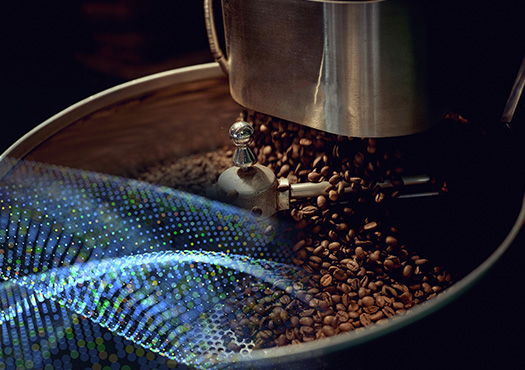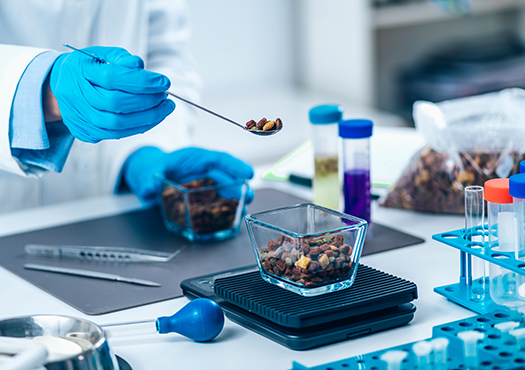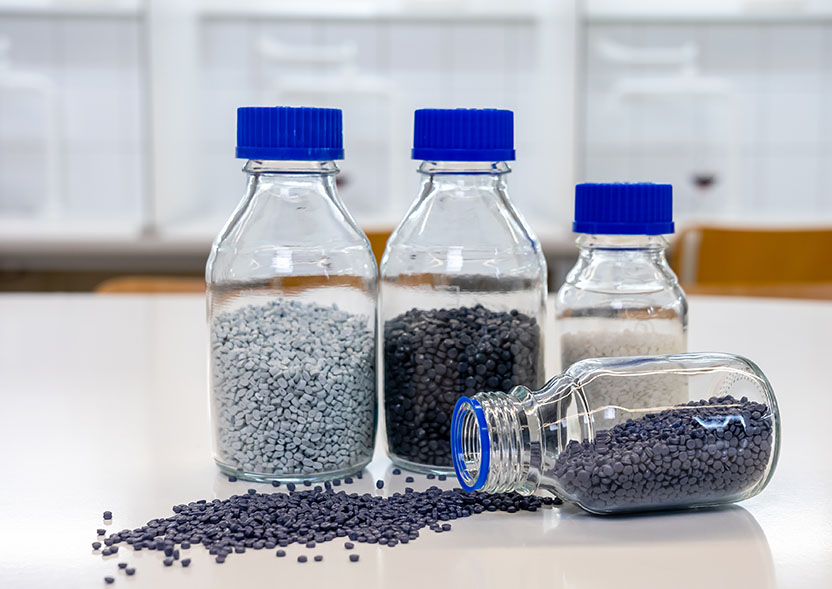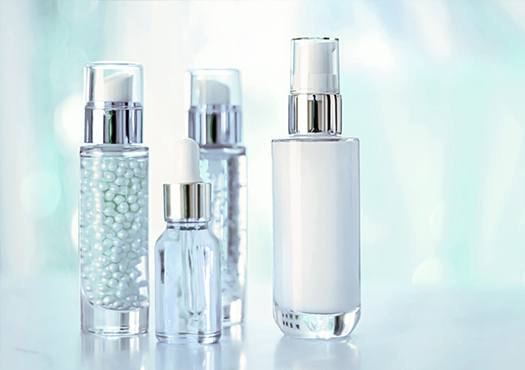
VOC analysis: Release of emissions & kinetics using real-time monitoring
Characterization of emission profiles and dynamic processes

Research and development of volatile organic compounds
How are aroma compounds released from foods? Which (odor) substances are formed during the processing or storage of products? Where does the smell of certain materials come from?
To find this out, we analyze volatile and semi-volatile organic compounds (VOCs and SVOCs) for sensory product optimization or to minimize harmful emissions. We observe and characterize the release of (S)VOCs from various products and materials. We tailor our analytical methods precisely to your products and individual challenges. This gives you insights into the typical compositions and patterns of (S)VOCs from various sources, such as biogenic raw materials, food and feed, plastics and consumer goods, or waste. In the healthcare and personal & home care sectors, released substances can be identified and their exposure (oral, dermal, inhalative) estimated. This provides you with crucial information about the presence or formation of chemical substances - both desirable and undesirable - and allows you to work with us in order to develop measures to avoid or promote certain substances.
Possible applications of our services in the field of emissions analysis & dynamics
Our research methods can be applied to all raw materials and products and are used in a wide variety of product categories. Here you can get an overview of the possible applications we can offer you in the field of emission analysis & dynamics.
Food & feed
Food, luxury foods, beverages, pet food


Consumption, processing and storage of food are complex, dynamic processes during which various changes occur and volatile and semi-volatile organic compounds ((S)VOCs), including odorous substances, are released. The release of (S)VOCs is influenced by the properties of the respective product/system, e.g. interactions with fats in the food matrix during consumption, temperature and humidity during the baking process, temperature and choice of microorganisms during fermentation, as well as microbiological or oxidation-, temperature- or light-induced processes during storage.
Using the latest analytical methods, we gain insights into the complex interactions under a wide range of process conditions and can therefore support you in optimizing your products and process control.
Our services in the area of food and animal feed:
- Investigation of the in vivo release mechanisms of volatile substances during consumption in real time to optimize food matrices
- Characterization of the aroma release of pet food in real time to optimize recipes and preparation recommendations
- Real-time monitoring of various processes (e.g. baking process, fermentation, in vitro digestion, food spoilage) using headspace analyses under controlled conditions and possible detection of marker substances for process control
- Characterization of (S)VOC release profiles and fingerprint analyses, even with high sample volumes, for product optimization and shelf-life monitoring
- Linking with traditional and temporal human sensory methods and identification of odor-active compounds possible
Non-food and air quality
Consumer goods, packaging, recyclates, textiles, processing machines and equipment, indoor air quality


Dynamic processes and fingerprint analyses play a key role in the non-food sector. For example, volatile compounds can migrate through packaging materials over time or be emitted from the material itself. Emissions also play a key role indoors, as they not only cause unpleasant odors but can also be harmful to the human health. During manufacturing processes, emissions can have a detrimental effect on your products. We clarify which substances are involved and how quickly these processes take place. In collaboration with you, we develop strategies to reduce emissions and migration in order to provide you with the best possible support in optimizing and assuring the quality of your products.
Our services in the non-food sector:
- Investigation of emission and migration processes using our controlled microchamber system, among other things (e.g. for recyclates and packaging; also possible in combination with tests for food conformity and cosmetics suitability, but also on a larger scale (e.g. interiors), even at trace levels
- Real-time monitoring of (S)VOC release to clarify off-odors or to investigate the influence of different material compositions (e.g. surface treatments or incorporation of additives) on the emission profile
- Monitoring of dynamic emissions (e.g. from processing machines, catalytic converters or kitchen appliances) for quality assurance and identification of marker substances, including the development of suitable sensors
- Characterization of the cleaning efficiency of filter systems
- Accompanying human sensory evaluation and/or identification of aroma-active substances is possible at any time
Health and personal & home care
Healthcare, medical products, food supplements, cosmetic products


The release (emission) and human exposure to volatile compounds is of great importance in the field of health and personal & home care. Once ingested, they can have an impact on human and animal health either directly or through their metabolites or derivatives. This is reflected in the so-called volatilome, the individual signature of volatile compounds in humans, which can be measured by respiratory gas and body emission analyses. At the same time, emissions can also be desirable for product manufacturers. In the case of cosmetic products, for example, the released odors can have a positive effect on the consumer.
We examine which substances are emitted from products and materials and track their dynamic development in real time. In this way, we determine the different behavior of volatile compounds with regard to their emission rates. Together, we develop strategies to optimize the emission profile of your product and are the right partner for carrying out exposure studies.
Our services in the field of health and personal & home care:
- Dynamic respiratory gas and body emission analyses to determine pharmacokinetics, which can elucidate the metabolic processes of dietary supplements
- Research into endogenous or ingested volatile compounds to discover new markers and marker signatures as a basis for the development of novel diagnostic, non-invasive solutions
- Exposure studies by various routes of uptake (dermal, inhalative, oral), e.g. to determine the uptake rate of potentially health-relevant substances from medical devices and cosmetic products
- Determination of the biocompatibility of materials in the healthcare sector with a focus on inhalation toxicity
- Risk assessment based on exposure to volatile compounds, e.g. in relation to occupational exposure limits
- Linking with multisensory aspects of the product effect
Insight into our laboratory of dynamic emissions analytics
While holding down the mouse, you can use the mouse pointer to move 360° virtually through our laboratory of dynamic emissions analytics!
Double click for full screen mode
 Fraunhofer Institute for Process Engineering and Packaging IVV
Fraunhofer Institute for Process Engineering and Packaging IVV